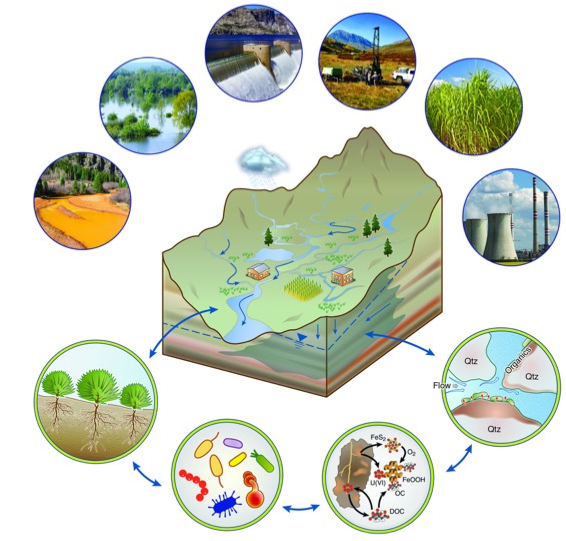
Development of reaction networks to describe biogeochemical transformations is a central component of the ESS research. All SFAs in one form or another develop and use reaction models for aqueous complexation, surface complexation, mineral dissolution-precipitation, and microbially mediated reactions. In particular, the fine-scale SFAs at Stanford Linear Acceleratory Center (SLAC), Lawrence Livermore National Laboratory (LLNL), and Argonne National Laboratory (ANL) focusing on developing mechanistic models of biogeochemical transformations in subsurface environments at fine scales, using molecular, genomic, metabolic, solid-phase, and aqueous chemistry data.
The IDEAS-Watersheds Reaction Network Activity bridges across the SFAs and develops the use of process-explicit reaction models for aqueous complexation, surface complexation, mineral dissolution-precipitation, microbially mediated reactions, microbial dynamics, and similar processes.
The collaboration activities will focus on two major aspects: (1) develop new approaches and workflows to incorporate new data and knowledge into the reaction models, including the derivation of reaction networks from metagenomics data and reaction parameters; and (2) implement reaction models that reflect the new understanding needed in the code CrunchFlow.
